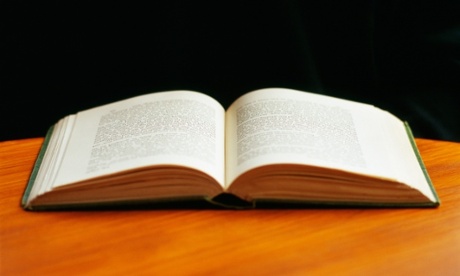
“My book club only reads wine labels,” goes the slogan on innumerable bags and aprons, and it’s true: book clubs are as notorious for boozing as for literary deliberations. But what do, or should, they drink?
I hosted a combined wine-and-book-club session at a friend’s house a few weeks ago, to see if I could find out if there was a perfect book club wine. Like most such groups, I’d guess, it was composed of mums who weren’t averse to a glass or two on a night out. My idea was to help them identify the wine style they liked best.
The most popular wines – and I imagine this would be true of any group of youngish women – were a picpoul, a Loire sauvignon blanc, a rioja and a malbec (all were sourced from Majestic). More divisive were a chardonnay, an Australian riesling (even though it was outstandingly good with an Asian-style salad that our hostess had whipped up) and a fruity beaujolais. Much of this, I suspect, was to do with the fact that none of these were perceived as particularly cool wines to be seen drinking. In hindsight, we should have tasted them blind.
There are practicalities, too. You don’t want to get stuck into a 15% abv red if you want members to stay awake or avoid them getting garrulous, argumentative or weepy about a recently departed ex. Similarly, you don’t want wines that are too acid, funky, oaky or sweet (unless it’s prosecco, which seems to be universally popular).
So I would play safe and keep things affordable. Crisp Italian whites such as gavi and fiano should go down well, plus they sound a lot more enticing than pinot grigio. Aldi has a classy-looking, fresh-tasting Gavi in its “Exquisite Collection” (£5.49; 12% abv), while Tesco’s Finest Fiano (13.5% abv), a smooth, Sicilian white, now comes in a 1.5-litre bag-in-box format for £10.49, although it still works out marginally cheaper by the bottle (£5.49); Tesco’s Picpoul (£7.99; 12.5% abv) from the same range is good, too.
Asda stocks a couple of well-priced French wines under the La Maison Elyse label that would suit a tight January budget: the zesty La Maison Elyse Sauvignon Blanc Colombard 2013 (£4; 12% abv) should please Kiwi sauvignon blanc fans, while the ripe, juicy Cabernet Shiraz 2013 (£4; 13% abv) should keep red wine lovers happy.
Finally, if you feel your fellow members might be suffering from the January blues, how about a bottle of the Co-op’s Pic St Loup Rosé 2013 (£6.99; 13.5% abv)? It might not live up to its hyperbolic Truly Irresistible billing, but it’s an appealing pale dry rosé that should appeal to lovers of Provence rosé. Not that I’d go so far as to read Peter Mayle with it…
- Fiona has been voted International Wine and Spirit Competition Blogger of the Year 2014 for her website matchingfoodandwine.com

